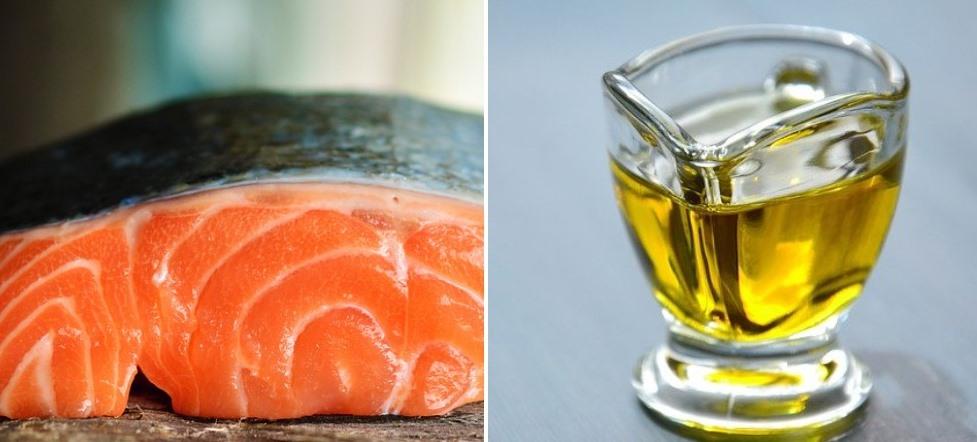Introduction to Fish Oil Project Report (Manufacturing), and Business Plan: Fish is one of the favorite food items in the non-vegetarian food menu when considered about 60% of Indians. So, market demand is always more for fish products. If we think about the global demand, the total demand is even very high. The main fish source is seawater. But the global fish harvest from the sea is gradually reducing. The only way we can ensure the availability of fish to cater to the growing demand is by fish farming. Inland freshwater fish has a major role here. We have large-scale natural ponds here so by following a proper business plan and decision, we can use this opportunity to own a successful small-scale farm.
A guide to Fish Oil Project Report, and Manufacturing Business Plan

Health benefits of Fish Oil
In the present times, due to extensive research on the edible value of fish oil, customers particularly understood that fish oil has EPA, Omega-3 polyunsaturated fatty acids (PUFA), DHA, and other ingredients, which have valuable impacts on human health. Even the traditional way of fish oil production and consumption around the world has changed. Several high-value-added fish oil items have been released in the market.
Uses of Fish Oil
Fish oil is extensively used in
- Aquaculture feed
- Animal and pet food
- Dietary Supplement
- Pharmaceuticals
Selection of fish breeds for starting a Fish Oil Manufacturing Business
The selection of Fish breeds is a crucial aspect of the sustainability of this business. The decision should be based on market need, maintenance aspect, availability of raw materials, effective use of resources, etc. Carp items like Catla, Grass carp, Rohu, common carp, etc. are appropriate for Indian ponds. Other breeds like Tilapia, catfish, etc. also raised in Indian Ponds. Polyculture (growing two or more fish breeds in the same place) is a suitable technique for optimally using resources. You may acquire quality fish seeds by contacting nearby fish hatcheries or by approaching the fisheries department.

“Fish oil” is obtained or manufactured using marine animals, that even include mammals, cetaceans, marine, and freshwater fish. All commercial fish oils across the world, except fish liver oil, are extensively extracted from fish wastes obtained after fish processing. Most fish meal processing plants generated both fish meal and fish oil. Fish meal is sent for animal feed production and fish oil is mainly kept for industrial applications.
Market potential of Fish Oil Manufacturing Business
Each year, approximately 20 million tons of raw materials are sourced from shellfish, whole fish, wild fish by-products, and farmed fish by-products. These raw materials can generate about 5 million tons of fish meal, and almost 1 million tons of fish oil. The trend is not continuously decreasing, and it is not because of overfishing but because of implementing adaptive stock management practices over the past years.
List of applications, license, registration, and permissions required to start Fish Oil Manufacturing Business in India
Starting a small-scale Fish oil manufacturing business needs the below approvals and essential licenses. Fish oil is a consumer-oriented processed food item so the business demands specific approvals and permissions before starting the unit. We have added a few essential permissions and licenses needed to make food items in India:
- Primarily, it’s essential to have your business registered with ROC.
- Avail of the GST number
- The Trade License may be availed by approaching Municipal Authority. They can ask or demand some fee.
- Apply for MSME Udyog Aadhaar online because it will help in getting the Govt. schemes and loans.
- This manufacturing business is classified under the food processing category and hence needs FSSAI registration and it’s an obligatory one.
- Also, you can contact the BIS certification if you plan to sell the product across the country. The BIS specification for Fish oil is IS 1485:1976.
- It’s important to obtain Trademark registration of your product or firm.
- In the future when you plan to export the products you have to get an IEC number.
- Get a trade license from the local authority.
- Then, apply for the VAT registration.
- Also, register your business for trademark.
- Though there is no pollution for this business. But it is suggested to check with the local office.
- Also, the unit must abide by the guidelines related to GMP and PFA Act that are important.
- The products must have ISO certification for gaining trust in people so apply for ISO 9001 certification
- Finally, you should make all the arrangements such as exhaust fans to provide a convenient ambiance inside the unit.
Raw materials required to start Fish Oil Manufacturing Business
The major raw materials for fish oil extraction are mentioned below:
- Salmon and trout
- Crustaceans
- Marine fish
- Carps
- Tilapias
- Others (crabs, eels, and lobsters)
List of machinery and equipment required to start Fish Oil Manufacturing Business
- Intake and grinding section
- Bagging and services
- Steel structures
- Mixing section
- Erecting and commissioning
- Electricals
- Hopper speed control and hopper & other equipment
- Transportation
- Boiler
- Weighing machine
- Oil Mill
- Refinery machine
- Office furniture and computers
The manufacturing process of Fish Oil and Refinery Project Report
This is a complete fish meal processing unit that comprises oil extraction and refinery.
The raw material is fishbone meal. First of all, the fish meal will be compressed into small pellets, which are later sent to solvent extraction equipment for about 20 to 30 minutes. The oil mixture is now pumped into the temporary storage tank. Then the solvent is evaporated through an evaporator and stripping tower. The recovered solvent will be passed to a solvent holding tank with a diversion box. The crude oil flows from the bottom of the stripping tower into the crude oil metering tank, then proceeds for refining step through pipelines. Refined fish oil will be lastly stored in the refined oil tank. The fish meal after the extraction is done will be passed through the desolventizing step and finally be stored in the stacking region.
Fish Oil Project Report Economics
In case if you miss this: Cocopeat Making Project Report, Business Plan.

Land and building construction on rental basis: Rs. 3,00,000.
Cost of Machinery:
- Cast iron pan 1000 lit. capacity (200 kg.Wt): Rs. 1,20,000
- Rotor cum screener to expel oil: Rs. 4,000
- Decorticator: Rs. 500
- Aluminium Disc 500 lit. capacity: Rs. 20,000
- Stirrer with motor 1 HP (for blending purpose): Rs. 10,000
- Other necessary equipments for cooking: Rs. 5,000
- Automatic filling machine for liquid: Rs. 70,000
- Office furniture: Rs. 10,000
- Total: Rs. 2,39,500
Pre-operative expenditure:
- Wooden chulla four nos.: Rs. 2,000
- Project profile: Rs. 200
- Travel: Rs. 2,000
- Regn. With Sales tax: Rs. 2,000
- Packing advance for plastic containers, cartons: Rs. 15,000
- Stationery: Rs. 300
- Telephone connection: Rs. 3,000
- Other misc. exp.: Rs. 5,000
- Total: Rs. 29,500
Fixed capital investment:
- Machinery: Rs. 2,39,500
- Pre-operative expr.: Rs. 29,500
- Total: Rs. 2,69,000
Working capital analysis:
- Fishes 60 tons @ Rs. 2000/Ton: Rs. 1,20,000
- Fish oil 500 lit. @ 60/lit.: Rs. 30,000
- Packing materials (plastic containers, cartons, etc.): Rs. 20,000
- Total: Rs. 1,70,000
Utilities:
- Wood 30 quintals @ Rs.120/qtl.: Rs. 3,600
- Electricity 300 KWH @ Rs.3.00: Rs. 900
- Total: Rs. 4,500
Staff and Labour:
- Skilled labour: Rs. 10,000
- Unskilled labour: Rs. 7,500
- Salesman: Rs. 3,000
- Accountant: Rs. 2,500
- Peon: Rs. 2,000
- Total: Rs. 25,000
Other expenses
- Rent: Rs. 2,500
- Transport and travel: Rs. 2,000
- Telephone: Rs. 400
- Stationery: Rs. 100
- Publicity: Rs. 1,000
- Sale tips: Rs. 1,000
- Other miscellaneous expenses: Rs. 2,000
- Taxes and levies: Rs. 500
- Total: Rs. 9,500
Total working capital P.M. = 1,70,000 + 4500 + 25,000 + 9,500 = Rs.2,09,000.
Total capital Investment:
- Fixed capital: Rs. 2,69,000
- Working capital: Rs. 2,09,000
- Total: Rs. 4,78,000
Cost of production (per annum):
- Depreciation on machinery and equipment @ 10%: Rs. 22,950
- Depreciation on furniture @ 20%: Rs. 2,000
- Recurring expenditure (per annum): Rs. 25,08,000
- Interest on total cap. Investment @ 14%: Rs. 66,920
- Total: Rs. 25,99,870
Turnover of Fish Oil production
Fish oil turnover 92.4 MT @ Rs. 30,500/ton: Rs. 28,18,200 (Say Rs. 28,20,000).
Profitability in Fish oil production
Profit = Rs. 28,20,000 – Rs. 25,99,870 = Rs. 2,20,130
Net profit ratio = Profit x 100/Turnover = 7.8%.
Break even analysis:
Fixed cost (per annum):
Total depreciation: Rs. 24,950
Interest @ 14%: Rs. 66,920
40% salary: Rs. 1,20,000
40% other exp. Except rent: Rs. 33,600
Rent: Rs. 30,000
Total: Rs. 2,75,470
B.E.P. = FC x 100 / FC + profit = 55%.
You may also check this: Tilapia Fish Farming In Tanks.
In case if you want to check these business ideas:
- Handicraft Making at Home: A Small Profitable Business Idea
- Pet-Tech Startups: Innovations for Animal Lovers
- Tech Repair Services: Meeting the Demand for Gadget Maintenance
- Maximizing Rewards: Smart Credit Card Habits for Cashback and Points
- Ultimate Guide to Making Money from Goat Milk Business
- How to Start an Agricultural Value Added Product Business
- Value-Added Business Ideas for Greenhouse: The Best Ways to Make Profits with Greenhouse Farming
- How to Make Profits with Organic Country Chicken: Best Strategies for Beginners
- 10 Value-added Business Ideas for Millets: Low-investment and Highly Profitable
- Why Cleaning Service Business Becoming More Profitable in Metro Cities in India
- 10 Best Businesses to Start in Ayodhya for Profits
- Top Drone Business Ideas in India: Unlocking Aerial Innovation & Opportunities
- Top 10 Service Businesses You Can Start with No Money
- Ultimate Guide to Starting a Home-Based Advertising Agency Business
- Starting a Nail Salon Near Your Location: Check List, Business Plan, Licensing, and Opening Instructions
- Construction Company Name Ideas: Guide to Create New Construction Company Names
- 8 Best Small Businesses to Start in Hyderabad: Low-Cost and Profitable
- 10 Best Small Businesses to Start in Massachusetts: Low-Cost and Profitable
- 10 Best Small Businesses to Start in Maryland: Low-Investment and Profitable
- 10 Best Small Businesses to Start in Delaware: Low-Investment and Profitable
- 10 Best Small Businesses to Start in Connecticut: Low-Investment and Profitable
- Top 10 Best Online Pet Business Ideas: Exploring Cats to Dogs
- 10 Best Small Businesses to Start in Colorado: Low-Investment and Profitable
- Top 10 Profitable Small Business Ideas in California: Low-Investment Tips